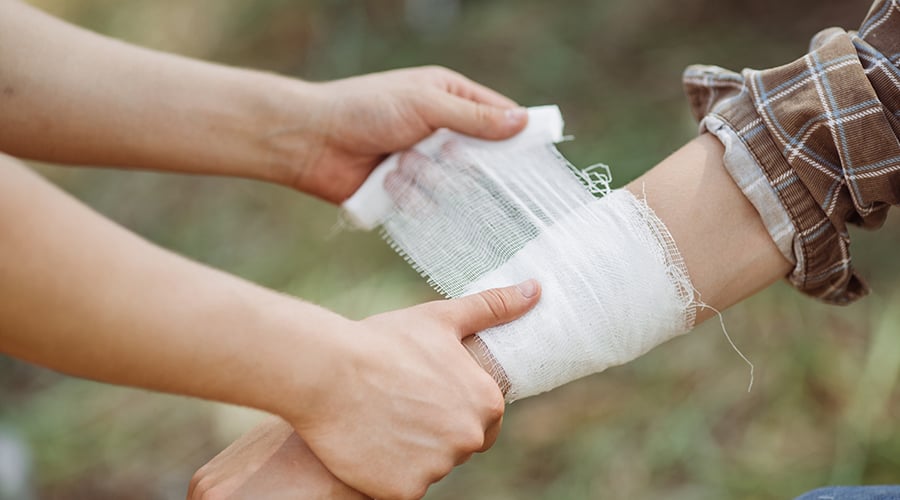How HBOT Helps Treat a Skin Graft Gone Wrong

A skin graft, which can be completed as a split-thickness or full-thickness graft, involves removing skin from one area of the body and relocating it to another to cover or heal a wound, such as a skin infection, burn, bed sore or ulcer, or skin cancer. Typically, a physician will set up multiple appointments to inspect the donor site and graft site to ensure it’s healing properly. Sometimes, complications can arise after the procedure, requiring patients to seek medical attention.
To address a skin graft gone wrong, surgeons may employ strategies such as dressing, re-grafting, graft immobilization, and using hyperbaric oxygen therapy, which accelerates healing and improves outcomes.
What causes a failed skin graft?
Skin grafts can become compromised when blood vessels fail to grow into it, causing poor vascularity. Collections of blood or fluids outside of blood vessels, known as hematomas or seromas, can form. Infections, such as a staph infection or pseudomonas, can occur at the graft site. One of the most common causes of failure is mechanical shearing, which is caused by movement. As you move, newly formed blood vessels may disconnect from the graft and fluid can form between the graft and graft site bed.
What are signs of having a failed skin graft?
Symptoms of a compromised graft can include signs of infection, such as fever and chills; redness, swelling, pain, bleeding, or discharge from either the donor or graft site.
Once you notice any of these signs and symptoms, contact your healthcare provider immediately. Your physician or surgeon may take one of several measures, depending on the severity of the compromise. These may include dressing the wound, re-grafting it, or performing graft immobilization. A fourth option is hyperbaric oxygen therapy (HBOT).
HBOT has been shown to increase the survival of the skin graft surface area by 29 percent, according to a study titled “Hyperbaric Oxygen Therapy for the Compromised Graft or Flap.” Plus, all patients surveyed achieved more than 60 percent graft take.
The high success rate HBOT has had in treating compromised grafts is further supported by the organization responsible for setting implementation standards, the Society of Undersea and Hyperbaric Medicine: “In tissue compromised by irradiation or in other cases where there is decreased perfusion or hypoxia, [HBOT] has been shown to be extremely useful in flap salvage. Hyperbaric oxygen can help maximize the viability of the compromised tissue thereby reducing the need for re-grafting or repeat flap procedures.”
Hyperbaric oxygen therapy (HBOT), according to extensive research and studies, has a high success rate in treating compromised grafts.
HBOT provides 100-percent oxygen in a pressurized chamber, increasing circulation, oxygenation and neovascularization, and decreasing tissue swelling. HBOT also stimulates fibroblasts, cells necessary for the production of new skin, and regenerates damaged tissue.
Multiple animal studies have also shown promising results. One concluded HBOT “shortened healing time significantly. Further, the combination of repeated skin grafting and [HBOT] reduced the healing time of partial thickness wounds to one-half of that of non-treated controls.” A second study, which focused on the use of HBOT on rabbit ear skin grafts, found those that received HBOT had an 82-percent increase in survival.
Hyperbaric Medical Solutions’ modern facility, complete with hyperbaric chambers, enables patients to take advantage of the benefits of hyperbaric oxygen therapy as an adjunctive treatment to skin grafts gone wrong. Plus, HBOT can help prevent future negative complications, accelerate graft healing, and salvage compromised tissue. Contact us or schedule an appointment today.
Written by Hyperbaric Medical Solutions
Hyperbaric Medical Solutions is a free-standing, independent medical practice, providing hyperbaric oxygen therapy (HBOT). HBOT is an advanced healing therapy that treats conditions that benefit from increased oxygen concentration and absorption in the body....
Read More


